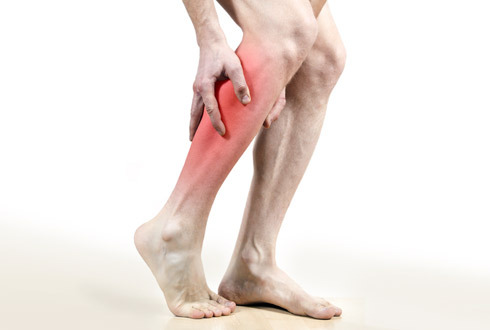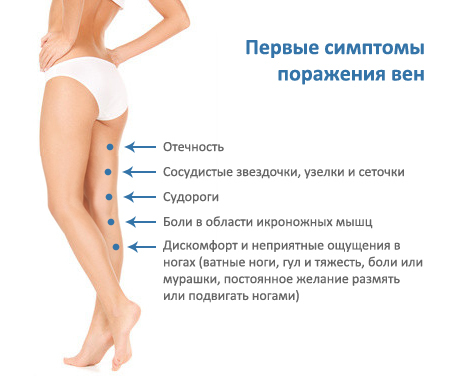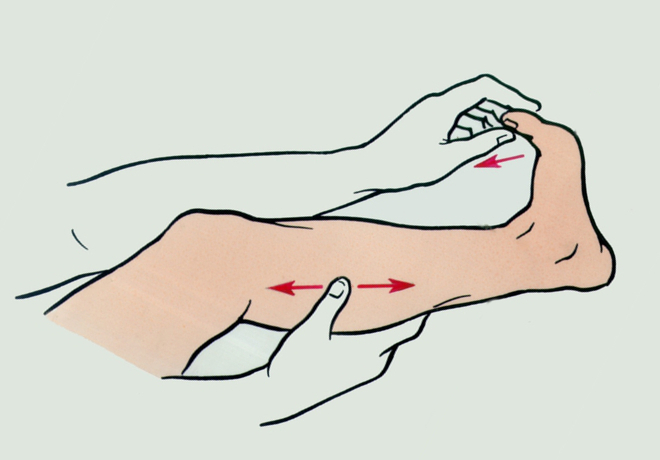Shakes his legs cramp: what to do?

It is a complaint about recurrent leg cramps that is considered one of the most common at a doctor's appointment.It is noteworthy that cramps in the legs can experience absolutely all categories of people - young and old, pregnant and children, with the appearance of absolute health and with already diagnosed pathologies.Most often, patients complain of the appearance of cramps in the legs at night, during sleep - this syndrome makes a person wake up, he experiences pain and uncomfortable sensations.
Contents: Seizures - what is it? Why does my legs cramp? Causes of leg cramps in pregnant women? Leg cramps in children at night? Convulsions in the legs - what to do? Seizures - diagnosis, treatment and preventionSeizures - what is it?
Recommended:Seizures are involuntary contractions of one or a group of muscles, which are necessarily accompanied by an intense pain syndrome.Most often, such sudden contractions of the muscles appear in the legs, or more precisely - on the back of the shin, in the calf muscle.
For some reason, the muscle starts to spasmodic, and this entails an arbitrary extension of the foot, and, to the maximum possible.Naturally, this condition provokes pain syndrome.
Why the legs cramp
In general, the reasons that can trigger the onset of leg cramps are quite a lot - from the violation of diet and diet to insufficient intake of important trace elements into the body.But the main reason for the periodic appearance of convulsive contractions of the leg muscles is a lack of magnesium in the body.
Magnesium deficiency in the body can happen only due to inefficient nutrition - the fact that the microelement is absorbed into the body tissues with excessive consumption of coffee, alcoholic beverages, sweet foods and flour products is already proved.The organism, feeling the deficiency of magnesium, begins to actively extract it from the musculoskeletal system - by the way, that is why when conducting a laboratory blood test, specialists determine the presence of magnesium either within the limits of the norm or with overestimated indices.
To understand that the reason for cramps in the legs is precisely the lack of magnesium in the body, it is enough to know other symptoms of such deficiency. These include:
- rapid fatigue, reduced concentration of attention and memory;
- plentiful night sweating;
- feelings of anxiety and a sense of fear;
- increased irritability;
- numbness of the extremities.
In addition, the cause of the appearance of seizures in the legs may be a deficiency of magnesium in the body, there are other factors that provoke the condition in question. Specialists identify the following:
- Reduced blood glucose - this usually occurs against the background of diabetes, when the patient is either too aggressive therapy, or ignores the recommendations of dietitians.
- Diseases of the thyroid gland.
- Deficiency of vitamin B6 in the body - classified as hypovitaminosis B.
- Diseases of the veins of the lower limbs - varicose veins, thrombophlebitis.Diseases of the spine degenerative-dystrophic nature - for example, osteochondrosis.

- Excessive physical exertion on the lower limbs - for example, long running, soccer, swimming.
- Chronic renal failure.
- Elevated levels of estrogen in the blood - refers to the imbalance of female sex hormones.
- Diseases associated with circulatory disorders in the vessels of the lower extremities and of a chronic nature - for example, atherosclerosis obliterans.
- Violations in the psychoemotional background.
- Sleep disorders, chronic fatigue syndrome.
The most interesting thing is that all of the above problems can arise in almost every person - they are the consequence of the "wrong" way of life. For example, the following diseases can result:
- self-treatment of serious infections of an infectious nature - for example, sore throat;
- constant stress, the need to solve many problems;
- improperly built up a diet - including snacks "on the run", eating semi-finished foods;
- constant wearing of high-heeled shoes - the development of varicose veins and thrombophlebitis is almost inevitable.
Causes of leg cramps in pregnant women
Leg cramps in pregnant women are common, but they are usually not associated with kidney failure or chronic cardiovascular disease. The reasons for the appearance of the syndrome in the period of bearing a child in women can be:
-
 Violation of the balance of vitamins and trace elements in the body, which can be associated with malnutrition, thyroid dysfunction, diuretics, excessively fast / active fetal growth.
Violation of the balance of vitamins and trace elements in the body, which can be associated with malnutrition, thyroid dysfunction, diuretics, excessively fast / active fetal growth. - Anemia of iron deficiency, occurring in moderate to severe severity.This condition is also associated with inadequate intake of iron in the body or blood loss in the first trimester of pregnancy.
- Hypoglycemia.
- Dehydration of the musculature.
- Lack of oxygen in the tissues of the body.
- Squeezing the inferior vena cava with an enlarged uterus when the woman is lying down.As a result, blood circulation in the lower extremities is disturbed, and already the result will be cramps in the legs.
- Chronic venous insufficiency.This contributes to the weight of the woman, the increased volume of blood that circulates through the veins, low tone and elasticity of the walls of blood vessels.
Note: in pregnant women may develop eclampsia - increased blood pressure, strong swelling, a protein is found in the urine.The most dangerous in eclampsia is the occurrence of generalized convulsive seizures, which is an unambiguous indicator for carrying out urgent delivery.
Leg cramps in children at night
The appearance of this syndrome in childhood is more often associated with active growth of the child.It is noteworthy that small children can not describe the painful convulsive syndrome in words, therefore they report their problem with crying - it is always sharp and piercing. The causes of the nocturnal seizures in children can be:
- severe hypothermia of the lower limbs;
- long stay in an uncomfortable position with tucked / bent legs;
- flat feet;
- lack of potassium and magnesium in the child's body.

It's interesting that flat feet and lack of potassium / magnesium will not be manifested by single convulsive attacks, but regularly arising.
Cramps in the legs - what to do
There are clear recommendations of doctors who will help to quickly cope with a cramp in the leg - pain and discomfort simply force a person to take some measures. What to do in case of a cramp in the leg:
- Pull the toe of the foot towards you( as far as possible), then return to its original position and immediately, without interruption, again pull the sock to yourself, but with the maximum effort.
- Get up on your feet and take a few steps - albeit with the effort.At this moment, the blood flow in the legs increases, which will relax the spastic tension muscle.
- Carry out a series of light massage movements in the direction from the center of the cramp to the periphery.
- Use a warming ointment or gel, applying the drug to the skin in the area of spasmodic muscle contraction with massage movements.
- Strongly pinch the cramped muscle, as an option - with sharp movements to prick the place of the spasm with a match, a hair clip.

Usually, after using one of the listed ways to relieve convulsions in the legs, relief comes.A person should take a reclining position with slightly raised legs - this will accelerate the outflow of blood from the lower limbs, which will prevent the occurrence of a second convulsion.
Seizures - Diagnosis, Treatment and Prevention
If convulsions in the legs are troubling with an enviable regularity, the above recommendations do not help quickly to remove a spasmodic attack, this is the reason for seeking professional medical help.First you need to visit a therapist( or pediatrician if there are convulsions in the legs of the child) - he will conduct an initial examination of the patient and send for additional consultation to a narrower specialist( neuropathologist, endocrinologist).Only then will the treatment of the underlying disease be prescribed-with positive dynamics and convulsions in the legs will occur less and less, and then completely come to naught.
If no pathological changes are detected in the body, the doctor will give recommendations on the elimination of possible causes of convulsive syndrome in the lower extremities. Typically, they are as follows:
- Organize proper nutrition:
- a day must eat at least 5 times;
- portions for each meal should be small;
- basis of nutrition let it be complex carbohydrates - cereals, pasta, fruits and vegetables;
- fats must be in the menu - it can be a small piece of oily fish( for example, a kind of salmon) or 50 g of butter daily;
- in the menu you need to enter nuts, bananas, dried apricots, dairy products, sea kale, carrots, greens.
- Maintain a healthy lifestyle, avoid physical exertion.The only thing about which doctors warn - on the lower limbs you need to give a minimum load.
- To sleep it is necessary in a comfortable bed, it is necessary to lift the lower limbs slightly above the axis of the trunk and head.
- Every night you can make foot baths with sea salt( 3 tablespoons for 5 liters of warm water) - they have a relaxing effect.
- Before going to bed, you can and should do rubbing stop ointment, which has a warming property.
- If venous insufficiency was previously diagnosed, then it is necessary to wear compression linen.
Please note: compression linen has different sizes and different degrees of pressure on the lower limbs.Therefore, such a linen should be selected by a doctor, from whom the patient is being treated.
-
 Uncomfortable shoes and too high heels should be discarded.The maximum that is allowed - wearing shoes with a heel is not more than 5 cm. And the heel should be stable!
Uncomfortable shoes and too high heels should be discarded.The maximum that is allowed - wearing shoes with a heel is not more than 5 cm. And the heel should be stable! - If the physician diagnoses flat feet, then it must be treated and corrected - for example, wear special orthopedic insoles or orthopedic shoes.
- To take vitamin-mineral complexes - calcium-D3-ni-comed, asparkam, magne-B6.But they must appoint a specialist!Seizures in the legs - a very unpleasant phenomenon, which complicates a person's life.
Tsygankova Yana Aleksandrovna, medical reviewer, therapeutist of the highest qualification category.


